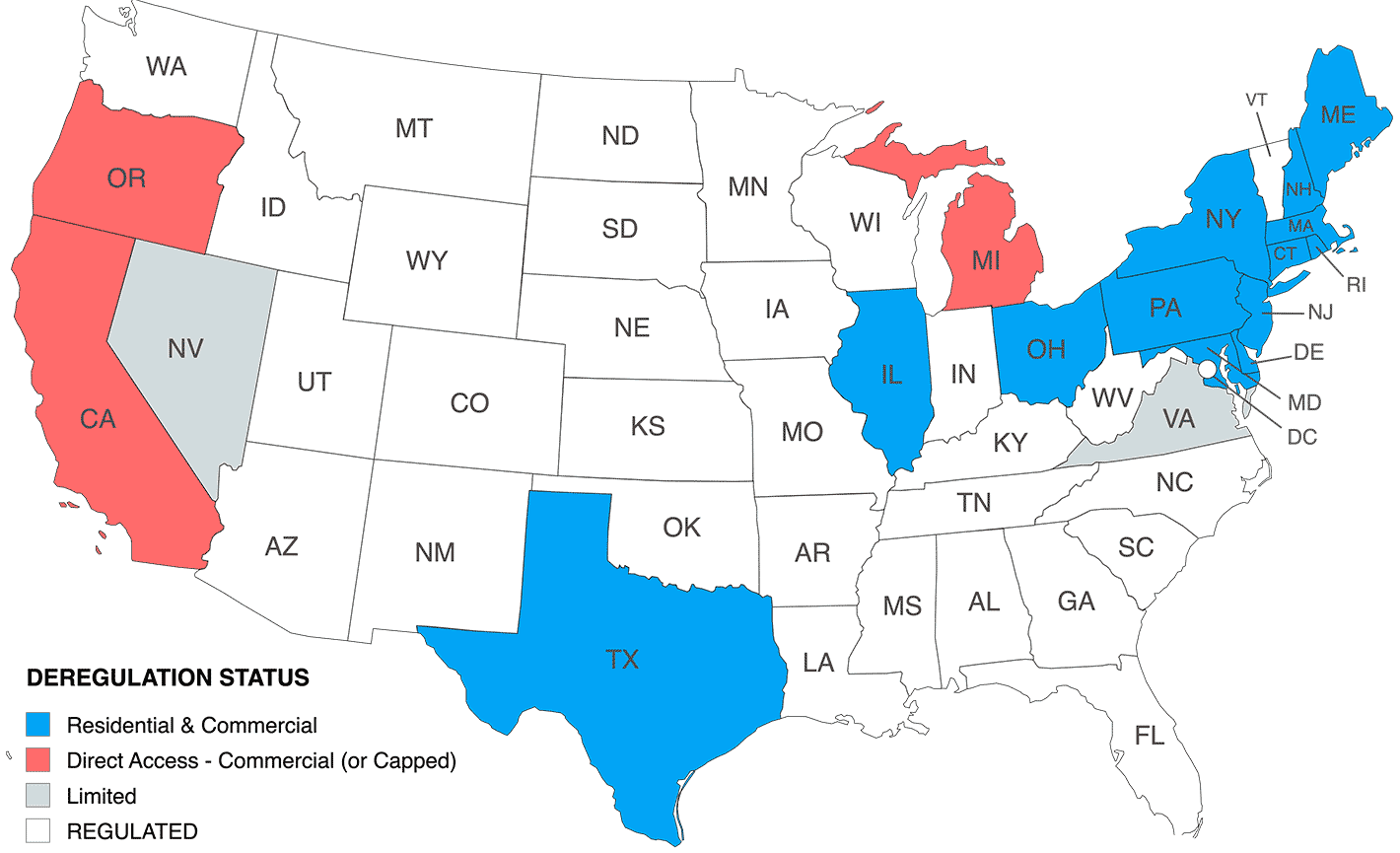Last updated:
This is a one-of-a-kind collection of data on the status of electricity deregulation in the United States.

Estimates are used where official statewide counts aren’t published. Residential choice is 0% where no residential retail choice exists. “Limited / Capped” indicates constrained C&I programs.
Customer Eligibility: Classes allowed to choose a supplier.
Switching Rate: Share of eligible customers who switched.
Switched Customers: Estimated customers served by competitive suppliers.
Market Notes: Year & key rules shaping the market.
Texas
Residential
Commercial & Industrial
Ohio
Residential
Commercial & Industrial
Illinois
Residential
Commercial & Industrial
Pennsylvania
Residential
Commercial & Industrial
New Hampshire
Residential
Commercial & Industrial
Rhode Island
Residential
Commercial & Industrial
Connecticut
Residential
Commercial & Industrial
Maryland
Residential
Commercial & Industrial
Massachusetts
Residential
Commercial & Industrial
New Jersey
Residential
Commercial & Industrial
New York
Residential
Commercial & Industrial
Maine
Residential
Commercial & Industrial
Delaware
Residential
Commercial & Industrial
Michigan
Residential
Commercial & Industrial
Oregon
Residential
Commercial & Industrial
Virginia
Residential
Commercial & Industrial
California
Residential
Commercial & Industrial
Nevada
Residential
Commercial & Industrial
Data sources: Hundreds of individual sources including utility filings, regulatory proceedings, public utility commission reports, ISO/RTO materials, market monitor summaries, and national energy data collections.